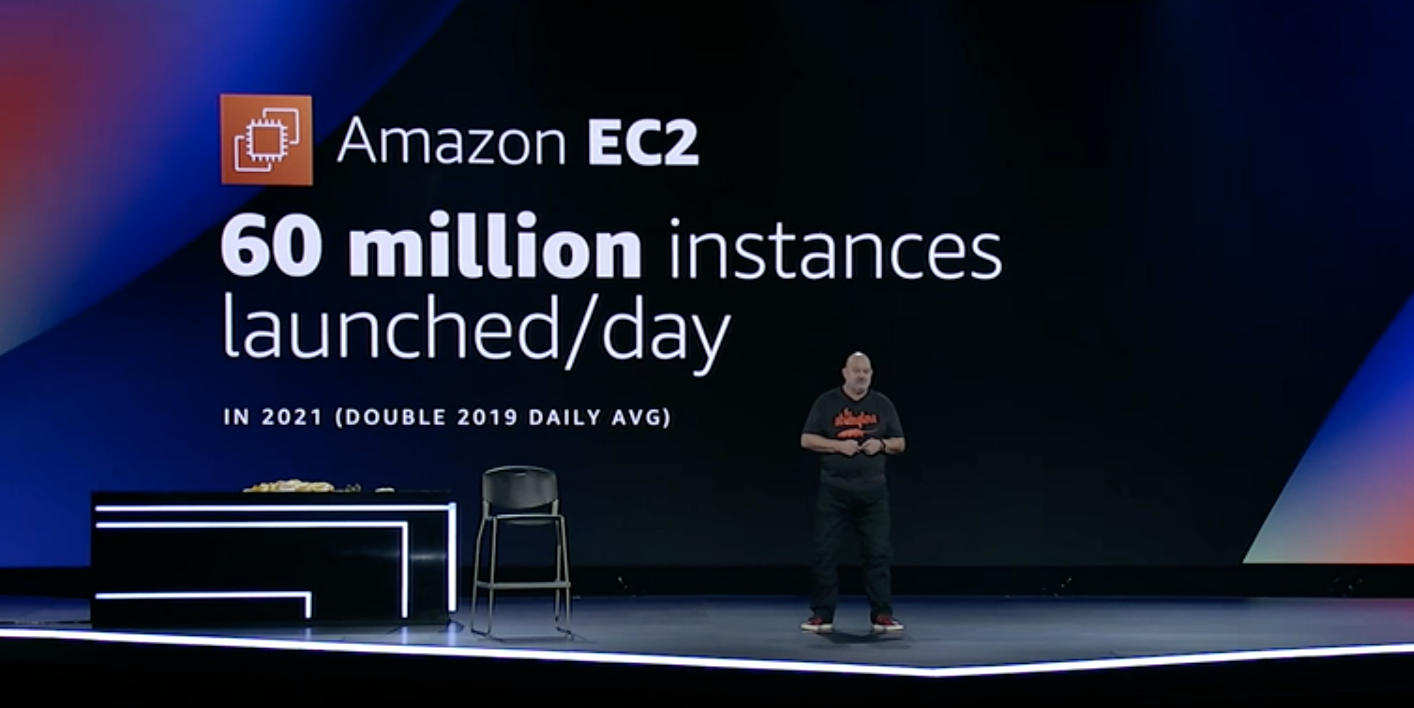Commentary on some of the interesting numbers from AWS re:Invent

15 and 10
Humans tend to pay particular attention to divisible-by-5 anniversaries, and thus 15 years of AWS and 10 years of re:Invent were celebrated throughout the conference this year.
History was a persistent framing method in the keynotes. Peter DeSantis and Werner Vogels both opened their talks harkening back to the founding of EC2 and the early days of AWS, and also talked about technological progression of the industry.
This historic framing was even more center stage in the talk from Adam Selipsky, in his first re:Invent as AWS CEO. Selipsky moved beyond just AWS and industry history and wove broader historic references as metaphors for his “pathfinder” themed keynote.
Storytelling has not always been one of the strong points of re:Invent, when sometimes the breadth of the company’s product catalog can make the conference feel like a deluge of announcements without a throughline. While there are still opportunities for AWS to tell coherent stories, this was a notable effort to weave a storyline not just about where AWS is going with their future product direction, but also where we as an industry came from to get to this point.
694
One EC2 milestone came up in several keynotes throughout the week: EC2 now launches 60M instances per day.

This is an impressively large number, especially considering that this is just newly created instances and doesn’t factor in existing longer running workloads.
60M is great, but this tweet was in the back of my mind when I heard it:
"X per second" is engineering, anything else is marketing.
— David Wragg (@dwragg) September 16, 2021
If you consider that 60M launches per day in terms of launches per seconds, that comes out to 694.
Whichever framing you prefer, it’s still damn impressive.
60%
One of the notable Preview launches of the week was the new C7g instance family, powered by the new Graviton3 processors. Graviton processors are custom designed by Amazon to help optimize price-performance of workloads.
In their benchmarking, AWS has found that most workloads see at least a 25% performance bump over Graviton2. Some testers have seen even greater improvements, like Liz Fong-Jones at Honeycomb reporting +35% performance for their workloads.
While the performance gains are great, I think the other interesting assertion is that the chips draw 60% less power than other comparable EC2 instances.
https://twitter.com/lizthegrey/status/1465727637859438597
AWS made several sustainability-centered announcements (like a Carbon Footprint calculator and adding a Sustainability Pillar to the Well-Architected Framework). While chip design may not directly fall into this set of sustainability news, the creation of more efficient chips is a related and important aspect of the effort to run more sustainable computing environments.
Disclosure: AWS and Honeycomb are RedMonk clients.
Photo credit: Flickr/morebyless under CC-BY 2.0
No Comments